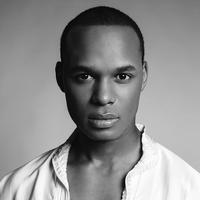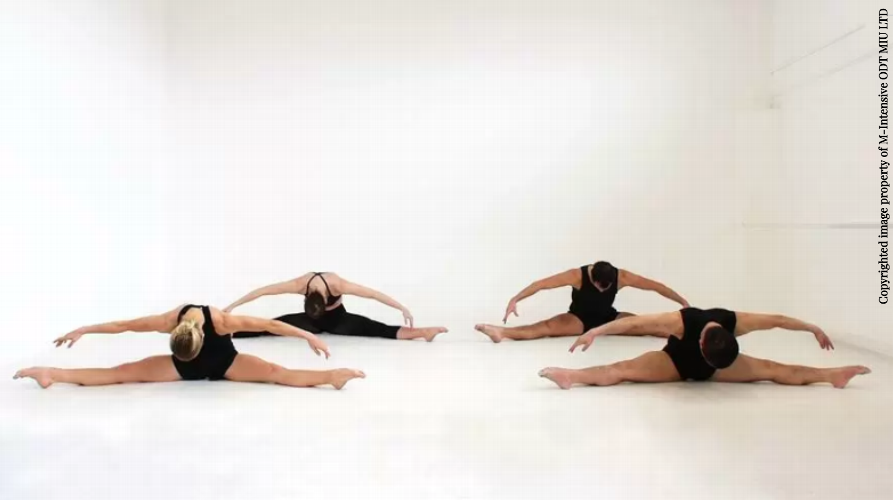Initially published in 2022, the author revised this article in April 2024. Last update: August 2025
>> Read until the end; we have a surprise for you!
Graham at M Intensive University
Today, we will discuss one of the core courses available on the MIU platform: Martha Graham's Movements*.
Our online school is designed for dance instructors and modern dance enthusiasts who are seeking training and resources in the Graham and Horton Techniques. By joining us, you can access over 400 detailed online Horton & Graham tutorials and classes. You will be able to learn these fundamental movements, along with other courses, at your own pace and from anywhere in the world. Additionally, you can broaden your teaching skills by attending our monthly Virtual Graham and Horton Experts workshops. As a member, you can join our live lessons, online classes and replay sessions 24/7.
Join our Graham or Horton Certification Programs and get certified in just four weeks**, six months, or one year. After completing the course, you will receive a Horton or Graham Techniques Teacher Certificate and be listed online as an MIU Registered Graham or Horton Techniques Teacher.
THERE IS A NEW MIU REGISTERED TEACHER IN THE WORLD!
Congratulations on your Graham Technique qualifications, Thais!
“I'm so grateful for MIU and Patrice. I love the Graham technique and met people and an institution that promote it with kindness, efficiency, and Love; it is wonderful! Thank you so much for our Journey! Long life to MIU!”
Thais G. MIU Registered Graham Technique Teacher
Music: Swirl - Breathe by Roderick L. Jackson and Marty Beller
*Fundamentals Floorwork and standing exercises of the Graham Technique; **For advanced Graham/Horton students only
How can we begin a Graham Technique class?
We typically begin a Graham Technique dance class with Bounces and Breathings on the floor, although some instructors may choose to start with a brief warm-up while standing. Once you have learned the fundamentals of this codified dance form, you are free to put your own spin on it, which can make each class a unique experience. Regardless of your starting point, bounces and breathings are crucial and should be the first movements introduced when traditional floor work has started.
Attending your first Graham class can be a transformative experience. It will allow you to stand tall, move your body, and feel alive.
Where do these movements come from?
After completing her training at the Denishawn School in Los Angeles, Martha Graham moved to New York City. In 1924, she worked as a dancer in a follies' show for a few years. However, she despised the commercial nature of the work and decided never to accept such jobs again because they sapped her motivation to pursue her artistic dreams.
In an effort to establish herself as a choreographer and break free from her mundane job, Martha Graham began teaching and laying the foundation for the Technique we now know. With the help of a few students, she developed a completely new form of dance and subsequently formed a troupe. For nearly six decades after founding her dance company, Martha Graham continued to innovate and refine this new style of dance that she had envisioned.
Martha Graham developed the Graham Technique on stage with the assistance of her dedicated disciples during choreography. The objective was to create a timeless dance form with a clear structure known as the Graham class. Various ancestral dance and movement forms, including Indian, Balinese, and Javanese classical dances, Afro-Caribbean dances, and Yoga, heavily influenced Martha Graham's movements. These influences provided valuable insights into using the pelvic area as a motive for action and into lines and shapes that have continued to inspire the contemporary dance world ever since.
Understanding the reasons behind our actions is crucial, as these are valid questions. We will analyze each of these steps to gain a better understanding. However, before we delve into Graham's exercises, it is essential to comprehend one critical aspect of the Graham Technique—it is not simply a technique but a form of dance.
It may not always be easy to explain, as dance is an art form. The movements we use in dance are meant to convey a message and tell a story, which is why we use the Graham technique to express ourselves. Once you understand the specificity of the dance form, it becomes easier to teach and learn.
Many exercises are derived from Graham's repertory pieces; however, they work wonders for the body. In this blog, I will explain more about them.
How many movements can we perform during one class?
The Graham Technique was the first modern dance technique that I learned and taught. One thing I quickly understood was that it is not possible to teach everything in a single Graham class. There are hundreds of exercises to choose from, so you can select a different topic each day and build your lesson around it.
It's common to feel overwhelmed by such syllabi, but it's important to remember that you can only teach the Graham technique to the best of your abilities. You can share as much information as possible, but it's impossible to cover everything. No one can.
Give yourself the freedom not to feel pressured when teaching. Every Graham instructor has their own unique way of teaching, with different preferences in arm placement and other details. It's important to encourage your students to learn from different teachers and do their own research. This approach has helped me greatly in my own dance teaching career.
Sharing your knowledge of the Technique is a valuable gift that your students will always appreciate.
In the end, we all follow one unique heritage; we all share the same values and principles, which are those of Martha Graham.
As long as you keep that in your heart, you will never go wrong.
How long does it take to learn the method?
Learning certain techniques takes time and cannot be mastered in just a few weeks. It requires years of practice and study. The movements involved are quite complex, and it will take a lot of practice before you can fully comprehend the logical process behind them. Initially, the Graham technique can be challenging, but don't worry; you can take as much time as you need to understand it. Once you get the hang of it, it will be like riding a bicycle, and some things will become second nature to you that you will never forget.
At M-Intensive University, we provide our students with clear instructions and guidance to help them understand the counts and facilitate their learning. In addition, I will explain the specific purpose of each movement, share teaching tools and tips, and provide extra benefits that I have discovered over the years through meticulous study of each movement. These movements will enhance your capabilities, and I will describe how it feels to perform them and the benefits you or your students will gain over time.
I have based this analysis on my observations and feedback from my students over the past fifteen years. We will also establish a clear connection between the class and the stage by observing these movements in several of Martha Graham's ballets.
It is essential to note that this connection is a crucial part of Graham's Technique. I always remind my students that the skills they learn in the Graham class can be applied to any style of dancing they wish to pursue, not just Graham's style.
Knowing the Graham Technique will help improve your understanding of dance, plain and simple.
Did you know?
During a time of segregation in America, Martha Graham was one of the first choreographers to welcome dancers of any cultural background to her dance company and school. She paved the way by opening her doors to anyone, regardless of their skin colour. Graham gave Asian, Black, and Latino dancers the resources and opportunities to showcase their talents in lead roles for many years, inspiring a whole new generation of dancers.
"Years later, my company and I toured the South prior to the civil rights movement, and performed at Spelman College. I told the young women of the all-black college that I would see them at the evening performance. They said, "Oh, no, we can't go to the theatre. It is for whites only." I went directly to the impresario. It was his first sellout and I said, "I understand you have sold out for the night." "Yes," he replied, "for the first time." I said, "That is simply wonderful. I want twenty seats for tonight's performance." He asked why and I said, "For the students at Spelman College. Otherwise there will be no performance." "Impossible," he cried. And with that I told my crew and my dancers to pack up. There would be no show that night. The impresario panicked and changed his mind. Within a few minutes I had twenty seats for the women of Spelman College."
Martha Graham, in her autobiography Blood Memory. 1991
When I began my professional dance career in my hometown, I didn't see any dancers like myself. It didn't initially bother me, but I did wonder if I was on the right path. A few years later, I discovered the Graham technique and studied the Graham repertory. This was in order to perform the male lead role in Acts of Light (1981) and The Messenger of Death in Clytemnestra (1958). I had to learn the work by watching videos of the Martha Graham Dance Company, where both lead dancers were black.
That was my first experience with Graham's work, and it demonstrated that the Graham technique was accessible to everyone. It truly inspired me and made me feel that I belonged.
Martha Graham and Lester Horton developed extraordinary modern dance techniques and promoted inclusivity, revolutionizing the dance industry in America.
NEW COURSE AT MIU!
Enrol in our Graham and Horton Teacher Training programme to become certified in both techniques. You'll receive $280 in financial support for your second tuition and gain a 2-year MIU membership. Contact us today and tell us more about yourself so we can send you more information!
Apply for MIU's Graham Teacher Programme using our video application:
learn more about our application process here
awaken the senses
The Fundamental Floor Work
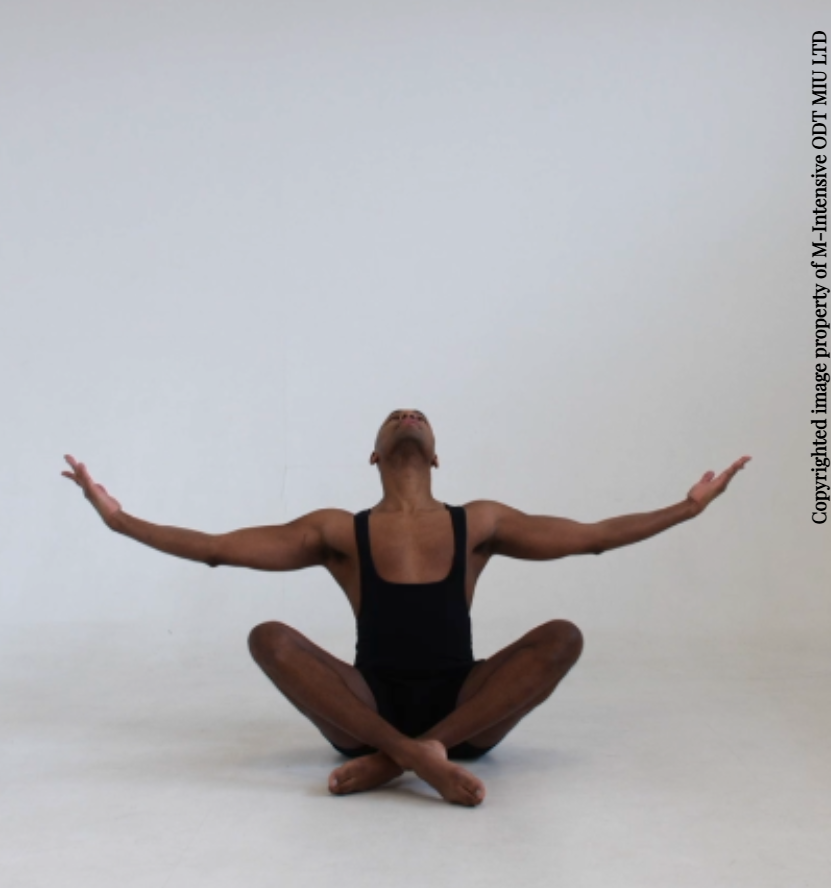 In this section, we will discuss the foundations of the Graham class. These exercises make the class so distinguishable and will effectively prepare your students' bodies for any activities they will perform later in the class, whether it's standing poses or moving across the floor. The training is not just physical but also mental and emotional.
In this section, we will discuss the foundations of the Graham class. These exercises make the class so distinguishable and will effectively prepare your students' bodies for any activities they will perform later in the class, whether it's standing poses or moving across the floor. The training is not just physical but also mental and emotional.
You now understand that emotions are a vital component of the Graham Technique, and as I like to say, we are already dancing. It is a performance that takes place within yourself.
1. Bounces
Purpose: Begin class with gentle body warm-up, sensory awakening, and back stretches. Mentally prepare for lessons.
Structure: In 3 positions, soles of feet together, in second and in parallel first
Bounces are a crucial aspect of performing a successful Graham class. This circular motion of energy assists you in working on the contraction and release of muscles, which you can use later in more complicated exercises. This moment is for you to deeply connect with your body. During bounces, you will feel the contraction in your pelvis all the way up to your neck. Your head should reach towards the floor, creating a C-shape with your back, and then release it from the base of your spine to the top of your head.
Gently bouncing is essential to warming up the body. It's like waking up in the morning, so it should be done with care and patience. Repeat the bounces with the soles of your feet together in second, in parallel first, and finish with breathings on two and four counts.
Recommendations: The contraction should be initiated from the pelvis, and then each muscle in the back should be elongated to stretch the spine to its maximum length.
Bonus: When bouncing, avoid using your head and instead use your torso. Imagine a large ball in the centre of your legs, and use your belly to gently touch it when you lean forward. Ensure that your back remains flat when you release, and make small movements continuously.
You can learn how to connect Bounces and Breathings in our tutorial at M-Intensive University.
2. Breathings
Purpose: Breathing exercise that corrects the posture and strengthens the entire back.
Structure: Follows the Bounces, performed on 2 and 4 counts with a high release
Graham repertory: Acts of Light (1981)
This particular movement is closely linked to bouncing, but it is actually a separate exercise. Known as the Breathings, it involves executing movements in 2 or 4 counts immediately after the bounces, which helps to facilitate the natural breathing process. The Graham Technique is designed to follow the natural motion of the human body, so this exercise represents being alive and breathing with your lungs, heart, and entire body. That is why I am so fond of this technique.
It is fantastic for improving posture. This exercise has helped my students greatly. It enhances placement and strengthens the back, resulting in beautiful arms. The benefits of this exercise extend to the entire torso, building long-lasting strength. In the ballet 'Acts of Light' (1981), the exercise is performed more theatrically with the forearms on the knees. The exercise involves taking a big breath that moves the entire body like a wave in the ocean, creating a beautiful effect.
Recommendations: This movement is designed to strengthen the back, but it can be quite challenging for beginners. To help your students, they can place their hands on the floor for support throughout the entire exercise until they gain more strength. This exercise will be especially beneficial for the high release position as it helps them build resistance while focusing on their posture. Lastly, it's important to remind your students to face the ceiling with their sternum during the high release to avoid any tension in their necks.
Bonus: This method instructs us to sit with a straight back, which is ideal. However, we're not just sitting still. As Martha Graham once said, it's the start of something. These positions (Bounces and Breathings) are active positions, which means we're ready to take action!
3. 3's and 6's, Seated Spirals or Threes
Purpose: Seated Spirals exercise. Breathing exercises that concentrate on isolating the hips as the primary motive of the movement.
Structure: Breathings on 3 with Spirals and opening of the leg variation
Graham repertory: Adorations (1975)
I really enjoy this exercise—it's absolutely gorgeous! It's a typical movement you would learn in a Graham technique class. This exercise helps you work the spirals efficiently and allows you to express more freedom of movement throughout the class. You can do many different combinations with it, so a Graham teacher can get very creative.
You can add your own personal touch while still following the same structure. This dramatic exercise is a great opportunity to showcase your performance skills.
Dancers who are new to Graham may initially have limited hip movement, but this will improve with practice.
Recommendations: I never realized how complex this movement was until I started teaching it. Students often face difficulties with coordination, memory retention, and proper use of their hips, back, arms, and legs. Therefore, it is essential to make them repeat the exercise frequently in the first few classes. To help them understand better, I prefer doing an extra hip warm-up activity right before the actual exercise.
For this warm-up, I use a simple game that is popular among children. The game requires you to sit with your legs together and crawl on your bottom, one hip at a time. Ensure that you initiate the movement from your pelvis (not the knees) and move forward for eight counts and then backwards for another eight counts. Repeat this at least four times.
This exercise will help your students feel their hips and gain more range of motion. Once they have mastered this, you can introduce the opening of the leg by repeating the same side twice without pivoting to the side.
To teach this movement effectively, it is essential to utilize hip movements. It is crucial to emphasize how the pelvis and back work together to move smoothly and naturally in spirals. Thanks to hip articulation, we can easily open and close our legs. The natural movement of the back progresses as a response.
4. Soles Of Feet Together Contractions
Purpose: Demonstrate nuances in the contraction, acquire more mobility in the spiral, and control the pelvic area - work on dynamics and attack in the movement.
Structure: Centre, side to side
Graham repertory: Ardent Song (1954)
This exercise involves movements that originated from the stage. We will focus on the contraction, release, and spiral in various ways. Depending on the level of the class, it can become quite complex. Breathe in and out while performing the movements such as contracting, releasing, spiralling, and high release. This exercise challenges you with its multiple dynamics and nuances and can push you to your limits.
The Graham Technique emphasizes the movement originating from the pelvis with active hips. It encourages risk-taking and vigorous self-expression, with volume and energy being crucial.
This exercise teaches students how the pelvis and spine work together to twist and curve the torso, improving greatly their elegance and mobility.
Recommendations: Transitioning between the centre and the spirals can be confusing for those who are new to the Graham technique. To demonstrate percussive movement in the combination, I suggest doing some voice work. I use an old and practical exercise that helps find the attack needed in the contractions. An intense and brief shout can stimulate the action and create impactful movement. Over time, this technique can help you gain significant power and control in the contraction. Additionally, I use my hands to guide the students in the spirals. This is very helpful and provides them with a clear understanding of the directions.
Learn how to incorporate this exercise in your class in our new Online Graham Intermediate Class
5. Long Leans
Purpose: High spiral and stretching exercise. It stretches the lateral muscles and strengthens the lower back. This exercise helps to improve coordination, speed, and mobility
Structure: Legs in second, back straight, spirals, pitch forward with a high release
Graham repertory: Acts of Light (1981)
Another one! I love this exercise! I like all of them, and you understand that now!
Long Leans is a fantastic exercise that can stretch your body in many ways. It improves coordination and moves your body in different directions depending on the level of the class. Many combinations are possible, including on your feet in the centre. For instance, you can create combinations and add grand rond de jambe, as seen in Acts of Light (1981). It is truly liberating and feels amazing.
Recommendations: It is important to explain the difference between a spiral and a high spiral in your class. We focus on this in the Long Leans. We delve deep into the spiral movement and ascend to great heights—so high that you can feel the sun on your face! In my class, I use the imagery of going towards the light, all the way up, as if someone is pulling your entire body. The stretching is very intense, and you will feel the full extent of it!
Martha Graham used to say that the bird never flies to the dark but always to the light! How beautiful is that...
I teach this exercise, "The Acts of Light Way," which is a complete expansion! It's delightful and the only way for me.
At MIU, we will provide you with the necessary support to introduce the Long Leans in your class:
6. Deep Stretches
Purpose: Intense stretching of the spine to deepen the contraction in different dynamics, work the spirals to develop a broader range of motion
Structure: Start in the Centre in second position and spiral with 3 different arm positions: Eagle, Diamond and V shape. Traditionally performed on 4, it can also be executed on 5 or 3, which are more informal variations of the codified exercise
Graham repertory: Primitive Mysteries (1931)
Wow, that is an intense exercise! This movement is characteristic of the Graham Technique and begins in the centre with legs in the second position. The dance routine consists of four phases. In the first phase, you extend your arms in a second parallel position that is slightly bent. The second phase involves making diamond shapes with your arms, while in the third phase, you position your arms in a V shape. The routine concludes with the fourth phase, in which you bring the soles of your feet together. Traditional Indian classical dance positions heavily inspire the arm gestures used.
I love the way the dynamics change in dance when the contraction initiates each movement and harmoniously works with the hips to engage the back. This is especially true with Graham's floor work, which helps develop more artistry in your performance. Additionally, it strengthens the back and enhances posture.
Recommendations: To perform the movement correctly, use the weight of your head to dive into the contraction that lies directly below you. Soles of Feet Together Contractions are recommended before attempting this exercise as they will help prepare your students. Begin by practising with feet together before introducing the entire movement in the second position. Your students should have a clear understanding of the spirals and be coordinated enough to execute the exercise efficiently. This exercise is not recommended for absolute beginners and requires a more advanced understanding of the Technique beforehand.
7. Pleadings
Purpose: Contraction and Release exercise. Develop resistance and correct posture by using gravity to strengthen the abdomen and create a deeper back curve.
Structure: On 2, 3, and 4 counts, combination on six counts with high spirals, on the side of the body, with a high release
Graham repertory: Conversation of Lovers (1981)
I am amazed by Martha Graham's creativity, especially her ability to create dramatic movements like the Pleadings.
This exercise is inspired by Michelangelo's famous sculpture "La Pietà." Although it may seem easy at first, it is quite challenging. The contraction of the muscles involved motivates the action and engages the core deeply, ultimately strengthening the entire abdomen. Although it can be problematic for some students, this movement is highly effective in developing a strong core.
The position of the back on the floor encourages you to deepen and curve the torso, which helps develop the resistance required for effortless rising. I love how Martha Graham used the movement in the duet "Conversation of Lovers" from "Acts of Light" (1981). In this piece, the dancer starts in a pleading position on the floor, and her lover takes her by the arms to finish in a splendid lift, which creates precisely the right feeling. Later in the ballet, we can see how this exercise is used more formally.
We will teach this movement at M-Intensive University, helping students develop a strong core essential to the Graham technique.
Recommendations: I have observed and studied various exercise variations, including those with pointed or flexed feet during contraction. You can even incorporate spirals, move to the side of the body, and finish with a high spiral arm movement. It can be challenging for some students to curve their backs while lying on the floor, but a simple exercise can tremendously improve their body awareness and back mobility. Place your students in a table position, with hands and knees on the floor, and encourage them to arch and curve their backs.
I suggest starting the Pleadings exercise with hands on the thighs for added torso support.
Work your Pleadings with our Online Graham Class 1 and learn more variations at MIU.
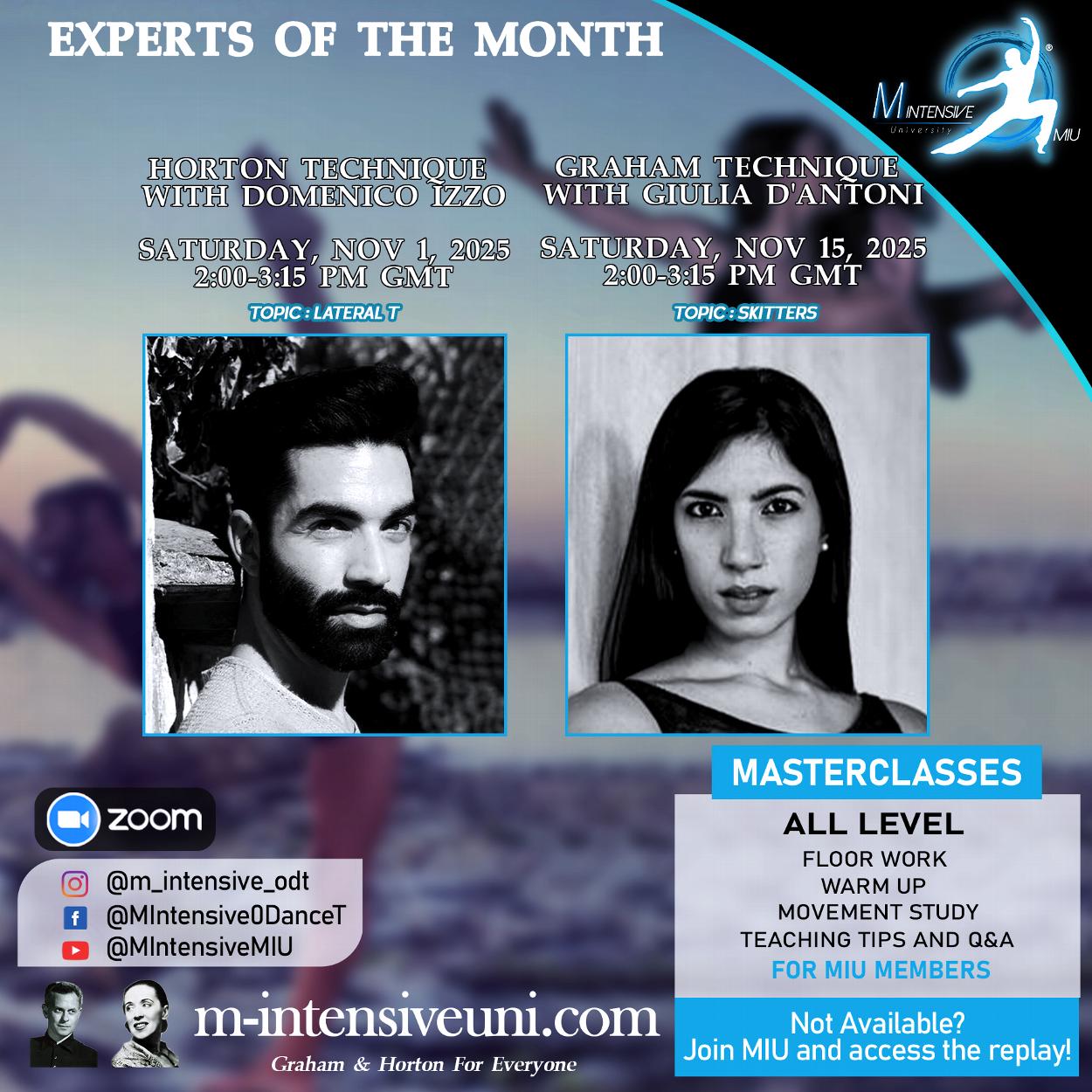
Replays Of The Month
Lateral T and Skitters Workshops
Horton and Graham Masterclasses of the month with Domenico and Giulia, live from Italy! At MIU, we believe in continuity and are very grateful to all the MIU Experts for allowing us all to receive meaningful instruction tailored just for our community with a real sense of purpose over the long term.
Be ready to dance and learn more with Domenico Izzo and Giulia D'Antoni.
And access 400+ online Horton and Graham courses and replay!
The Special Ones
The Graham Technique Studies
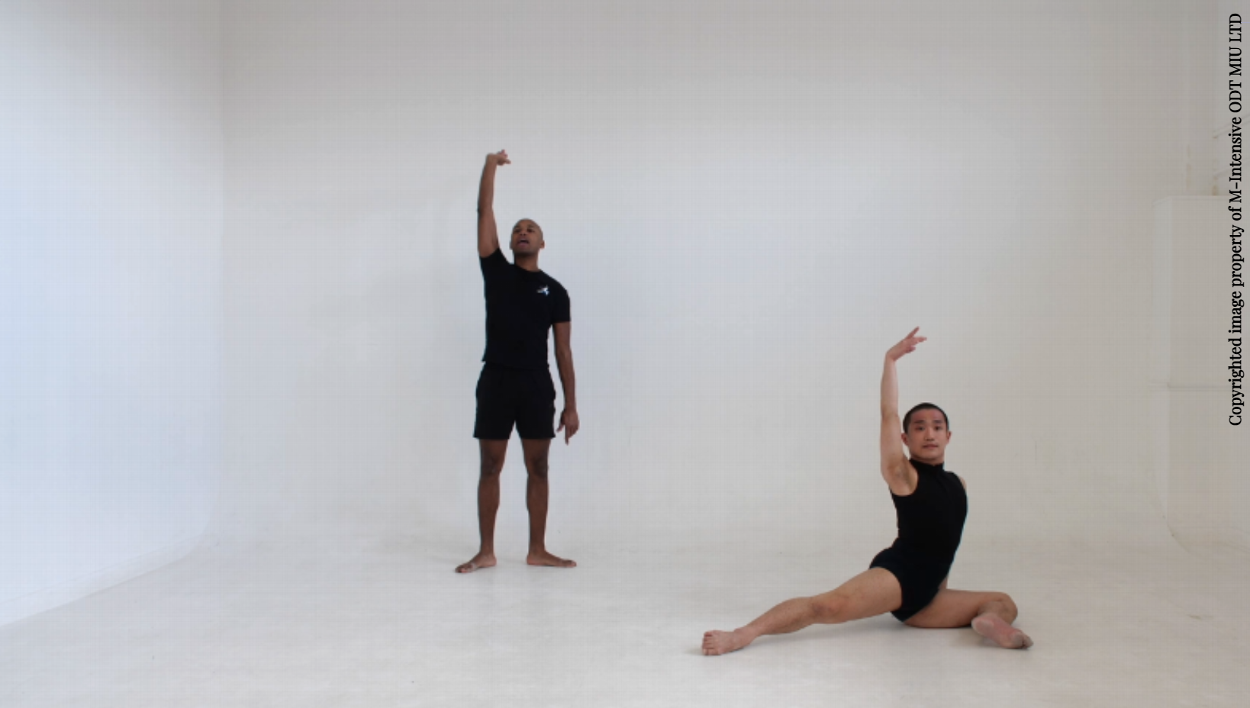 These exercises will help Graham develop his essential trademark. You will learn not only movements but also the universal principles of the techniques, which are shared worldwide.
These exercises will help Graham develop his essential trademark. You will learn not only movements but also the universal principles of the techniques, which are shared worldwide.
These exercises are not easy, and you will need time and patience to acquire the required quality of movement. They are not just about counts and lines; they involve precise shapes, and the body is stretched creatively and unusually.
You will love learning these exercises, and your students will enjoy the challenge!
8. Turns Around The Back in 4th Position
Purpose: Perform circular movements to work the Spiral. Isolate your torso to enhance flexibility, mobility, and coordination and build resistance.
Structure: Start in 4th position, with 1 and 2 arms, knee work
Graham repertory: Acts of Light (1981)
This is a symbolic movement of the Graham Technique.
It targets the torso and focuses on working the spiral deeply. Incorporating various arm gestures enhances both the range of motion and coordination. This exercise is also an excellent way to stretch your muscles. However, it is not an easy exercise, and beginners might find it challenging to place and align themselves correctly in the 4th position. Consistent practice is the key to perfecting this exercise.
Increasing your range of mobility is a great way to connect the hips and torso and improve core stability.
Recommendations: It is crucial to find the correct posture at the beginning while teaching, and using shapes and images can be beneficial. It is recommended to mention the 90-degree angle in the fourth position and to keep the waist facing forward while sitting on the floor to stabilize the torso. It's like sitting on the water, touching its surface with your fingertips every time you turn your back. This way, you can connect with the Earth. Placing your hands on the floor at the beginning can also be helpful.
It's recommended to avoid introducing arm movements right away when starting a lesson. Instead, it's important to focus on the connection between the pelvis and the back. The movement should start from the hips, then the waist, followed by the back, shoulders, and finally, the head. Always remember to move from the pelvis up to the top of the head!
Teach using a block-based approach to ensure clear visualization and establish specific goals for each phase.
9. Back Leg Extension
Purpose: Practice the arabesque position, focus on deepening your spiral movement, and work on improving your coordination.
Structure: In the 4th position, facing the left or right stage, on six counts. Variation on the knees for advanced dancers. There are informal variations of the codified exercise where the traditional coordination of the arms and legs is modified, redistributing weight differently during some phases
The back leg extension is a fantastic exercise that works wonders for your body. It helps you to achieve correct placement and alignment, particularly in the arabesque position in the fourth position. This dynamic movement is very effective in increasing your range of motion and improving your spiral coordination. However, it's not an easy exercise, especially for beginners. It requires strength and good body awareness to perform correctly. This exercise also helps stretch your back muscles deeply, pulling your spine into intense spirals.
It's best suited for advanced beginners and intermediate-level students who are familiar with the proper form and technique.
Recommendations: Maintaining turnout in the back leg during arabesque can be challenging for some students. To improve posture, it is recommended to start in a low diagonal position. Begin with the back leg behind you, similar to how you would do it at the barre in attitude.
Avoid forcing the arabesque by stretching between the legs in the last phase. Instead, maintain correct attitude alignment and focus on the back.
I like to use an elastic band to return to the 4th position in the first phase. You can see this in M-Intensive University's tutorial below.
10. Pretzel
Purpose: Back fall exercise. Preparation to rise and fall in the centre. Strengthen the abdomen and preserve the back. Work dynamics and coordination
Structure: On 16, 8, 4 counts
Graham repertory: Adorations (1975)
The performance was a breathtaking display of fluidity, grace, and power, truly a drama with a capital D!
Martha Graham's genius is evident in how she pushes dancers to their limits, inspiring and motivating them. You can also alter the counts to gradually increase speed during training.
Martha used to say that the dancers fell into themselves to rise beautifully, and we have a perfect example of that.
Watch Alyssa Cebulski dance to Stahv Danker's music in Master Teacher Miki Orihara's world-acclaimed class at the NYC Martha Graham Dance Company studio.
No words are needed! Oh, there is a word, actually: Exquisite!
Recommendations: This exercise is suitable for intermediate to advanced students only, as it requires flexibility, excellent knowledge of the technique, and core stability. To improve the resistance in the contraction, it is recommended that you start by introducing the back fall with the legs together rather than crossing them. Once you master this, you can move on to learning fast-paced sequences.
Add glute stretching before the Pretzel position to avoid forcing the sit.
11. Exercise on Six
Purpose: Stretch the entire front of the body, including the deep hip flexors, and the back. This exercise strengthens the back muscles and the glutes, while also enhancing posture.
Structure: in 6 movements, two counts per position, and advanced variation on the knees with roll. There are more advanced combinations that do not require arm support on the ankles. Informal versions of the exercise are available, including high releases with arms in second position during different phases to challenge more advanced students
This is a common exercise in the Graham Technique, also known as the Ustrasana pose in Yoga, which clearly inspired the exercise.
Martha Graham developed an exercise that brings the pose to life, while simultaneously stretching and strengthening your body. This exercise is called the "Exercise on Six" due to its six different phases. Knowing this information is important as it will help your students remember how to properly execute the exercise.
You will gain more flexibility in the back and increase the power of the contraction. This is also a great tool to introduce the work on the knee. Stay two counts in each position to fully use the time and perform each phase with resistance and accuracy. I like this short study that will often end the floor work.
Recommendations: It can be challenging for those with bony knees like mine, making it uncomfortable or even painful. Please allow the use of a mat or knee pads for a pain-free exercise experience.
The pelvis should remain stable while engaging the glutes and maintaining a strong core to protect the back and reinforce the hip flexors.
12. Traveling Fall
Purpose: Rise and Back Fall study on the knees
Structure: From 16 counts and faster. There are options in the execution, with one going into full high release during the contraction, while the other faces the high diagonal
Graham repertory: Acts of Light (1981)
The Traveling Falls! My number one! It is my absolute favourite that we can see in Cortege of Eagles with different beautiful arm gestures (1965) and, more recently, in the glorious Acts of Light, which is the version used in the Graham technique class today.
I was very fortunate to dance her ballet on stage, and I can't express how I felt the first time I performed it. I am embarrassed to admit it, but I nearly cried. I didn't expect such energy. It was incredible. It is just pure joy!
I fell in love with the Graham Technique because of the traveling fall.
You will start on the knee to take a significant contraction, the torso towards the ceiling in a high spiral; you make one with the power of the universe. The sunshine on your face, you let it go completely; it is like floating before falling endlessly to the ground. You are free; you are light.
Then, there is a recovery to return to phase 1. The spiral is helpful and will motivate the movement. The spiral right before the first contraction will give you the impulse you need to move correctly.
In this exercise, I feel closest to Martha Graham. I dance for her as a ritual. We honour your light by sharing it with others!
Recommendations: Due to its technical nature, this is an advanced technique meant for proficient students. The Graham technique has a method for executing a back fall, and the positioning of your arm and hand can be extremely beneficial. It is crucial to maintain the contraction throughout the entire process, including the back fall, release, and speedy recovery. Placing your arm right under the side of your body can aid in this process.
Make sure to initiate movement with contractions and protect yourself with proper arm and torso positioning. Wear knee pads if necessary.
Join us on Instagram at @m_intensive_odt for weekly Graham love
Rise and Shine
Standing and Across the Floor
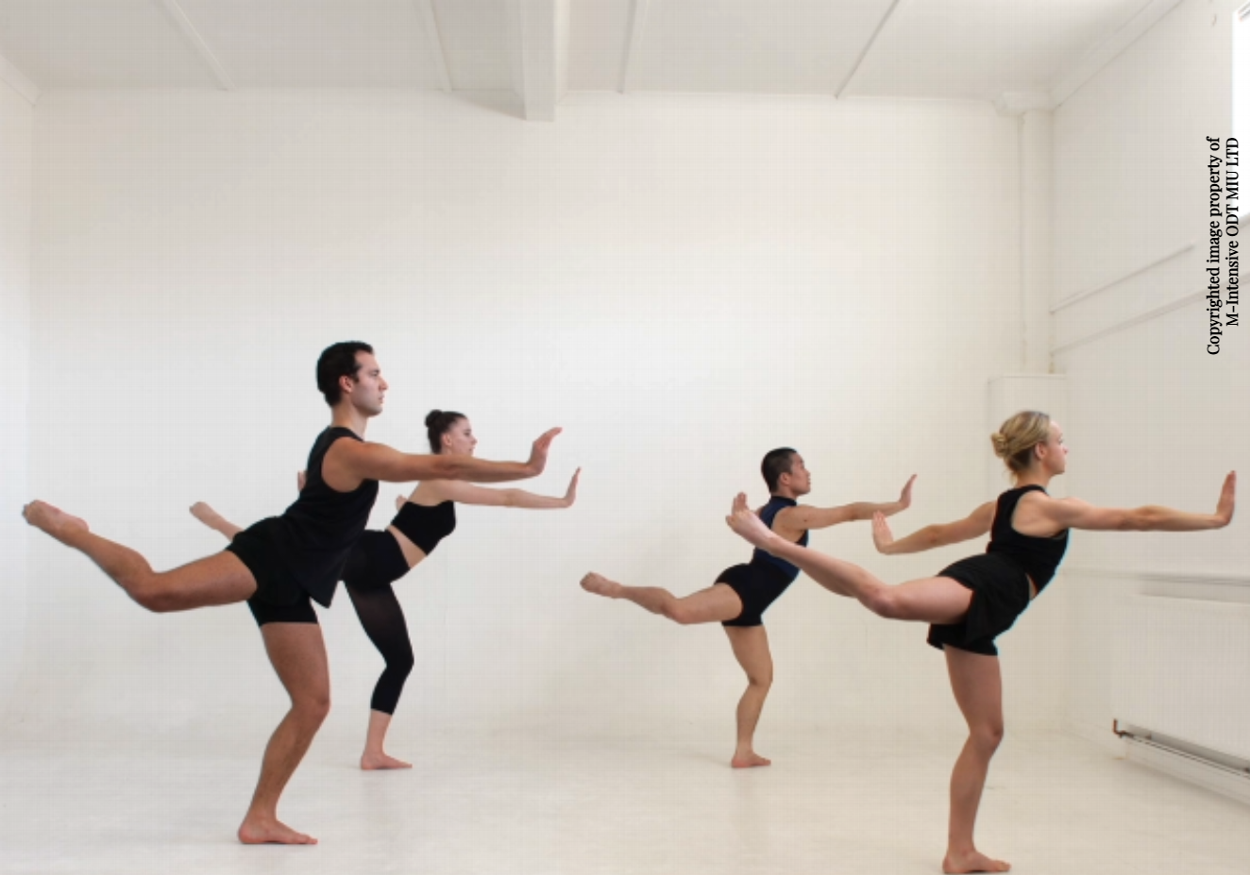
Get ready for more magic as we move to the next stage of your training. The skills you've learned on the floor have thoroughly prepared you for this moment. You'll be performing many movements that apply the same principles you've already mastered. You're fully warmed up and ready to move across the space.
We'll start with plies, then work on footwork with brushes (degages or jetes in the Graham Technique). Along the way, you'll discover some great exercises like Slow Walks, Prances, and Triplets. To become a confident Graham technique dancer, we'll do various exercises to work your entire body. And we'll finish with a combination that ties everything together.
13. The Plies
Purpose: Warm up the body and strengthen joints to enhance muscle contraction and prepare for movement across the floor.
Structure: In 1st to 5th position
Graham repertory: Maple Leaf Rag (1990)
The plies in the Graham technique are truly special and create a wonderful sensation. They are a memorable part of the class experience. We will begin in the first position with a deep and smooth demi plié. You will hold a deep contraction for a few counts before releasing it with a liberating high release. This movement is a celebration of life! Graham plies are designed to prepare your body for jumps and other challenging movements in the centre and across the floor, just like any good plié exercise.
Performing a proper plié can prevent various injuries. It creates a spring-like motion in your legs, which helps absorb the impact when you land from jumps. A plié is also essential to develop artistry and musicality, as we can see brilliantly in the example of Maple Leaf Rag (1990). You can see more formal plies in Acts of Light (1981) or Adorations (1975).
The inspiration that Martha Graham's work exudes through her brilliant use of simple plies is truly remarkable.
Recommendations: When performing a grand plié in 1st position, it's important not to drop down but to control the descent and use the full count to demonstrate resistance in the movement. Acquiring the contraction in 1st position can be difficult for students, and they can often become confused the first time they try it. To prepare for pliés, it's helpful to work on pleadings beforehand on the floor to ensure proper posture.
The Graham technique is designed to build strength and proper alignment, with each exercise seamlessly leading into the next. For example, in high releases, it's important to lift the sternum towards the ceiling to avoid straining the neck.
14. Slow Walks
Purpose: Moving across the floor exercise emphasizes coordination, weight shift, and expression. It facilitates transitions and improves balance.
Structure: Slow walks with or without port de bras
Graham repertory: Seraphic Dialogue (1955)
We are now moving across the floor with this timeless exercise, perfect for developing artistry and expansion. Before running, we must learn to walk! Martha Graham's Technique is all about a journey.
In this exercise, we will focus on transferring weight from one foot to the other. The slow motion will allow you to feel and perform the back movement that initiates the action. Although we are walking with our legs, the back plays a crucial role in Slow Walks. As you become comfortable with this exercise, you can incorporate arm movements and spirals and experiment with different directions and speeds.
You can create multiple combinations, such as circular walks with turns. This exercise is excellent for helping with transitions and linking movements in combinations.
Recommendations: To begin, teach your students Slow Walks without spirals. This will help them focus on coordinating their back and legs. Make sure the shoulders are above the hips and stretch the lower back to strengthen the core using the abdomen and the glutes. The key is to transfer weight smoothly and seamlessly.
Remember that the head follows the movement of the back, so it's important to move in the same direction. Finally, the best advice is to move as you would on the street! This experience can help increase body awareness and feel the complexity of the mechanism.
15. Triplets
Purpose: Weight transfer exercise on releve that improves coordination and strengthens ankles. Travel and connect movements in combination.
Structure: on three counts, spirals, with port de bras, across the floor
Graham repertory: Appalachian Spring (1944)
This movement is an excellent way to glide gracefully across the floor. It involves strengthening your ankles with releves while moving your arms effortlessly in the air. It's a fantastic tool for improving coordination. There are endless combinations, such as moving flat across the floor, in a circle, with spirals, and so on. Every time you practice it, it becomes more challenging, which makes it more enjoyable. Students absolutely love Triplets!
It is also fantastic for linking movements, entering or exiting the stage, and it can precede more extensive exercises such as jumps. This step was influenced by the fast-paced walking style of the Javanese classical dance, which involves tip-toeing.
Martha Graham was an attentive observer of her peers. This action reminds me of how we hop in the street before taking a run. This is why Graham appears so natural. In the end, it all makes sense.
Recommendations: Introduce the triplets gradually and without spirals to focus on the leg work and travel. The pelvis should be lowered during the transition, and the legs should be bent explicitly. This plié will help you generate momentum and gain greater freedom of expression in the activity.
On the first try, students tend to walk in place, but in reality, it is a continuous movement where the use of space is crucial.
When introducing my students to the movement, I like to emphasize the importance of good posture by encouraging them to place their hands on their hips. This helps them understand how the back supports the body during exercise. To illustrate this point, I often use the example of tiptoeing across a freshly cleaned wet floor—you want to avoid staining it, so you step very carefully and deliberately.
This analogy may seem funny, but it accurately represents the level of focus and attention required to maintain good posture during exercise.
16. The Wide Fall in Second / Split Fall
Purpose: Front fall exercise. Improves flexibility and resistance in the contraction to create dramatic tension. Gain more flexibility in the split.
Structure: From a standing position or on the floor, on the spot, and across the floor
Graham repertory: Deep Song (1937)
The wide fall in second is a dramatic movement of the Graham Technique. Martha's creations are gorgeous.
It is possible to start this exercise in a standing position and use it as a complement to another floor exercise, such as 3 Witches (4th position). When incorporated into the latter, it can enhance the dynamics and add force to the movement. You can choose to prolong the fall or make it fast and impactful, like a sudden stop.
The contraction not only helps you gain more control but also enables your body to resist the fall, resulting in a beautiful suspension in the air. Remember, a split is not just about extending your legs apart; the contraction plays a vital role. With the correct placement of your arms and hands, you can create the desired shape.
This is one of the most beautiful and popular Graham steps in the Technique.
Recommendations: The back foot is on demi-pointe until it reaches the floor, while the contraction is essential for suspending the movement and creating dramatic tension, making it unique.
17. Tilt
Purpose: Extension exercise of the legs in second, gain amplitude by tilting the torso to demonstrate unity in complete opposition.
Structure: On the spot, across the floor, in jumps and falls
Graham repertoire: Diversion of Angels (1948)
This iconic dance movement is often taught in Martha Graham's dance Technique classes and has inspired the contemporary dance world for years.
In classical ballet, there are two types of leg extensions: the tilt and the traditional developpe in second. The main difference between them lies in the torso and hip movement. During a tilt, the torso tilts sideways to help extend the leg and free up the hips. This creates a straight line that beautifully shows off the extension.
The more you tilt your torso, the higher your leg will lift as the back initiates the movement.
This movement can be performed in various ways, including on the floor, on releve, in jumps, and in turns. It can also be combined with a cartwheel, as seen in Diversion of Angels (1948).
Recommendations: I introduce the tilt position on the floor as an exercise or variation in Long Leans with leg bend. It helps students assimilate the correct posture of the torso.
We will work diagonally across the floor, creating an opposition between the hand and lifted leg for a more interesting exercise with travelling.
You can also start with plié in the second position and shift your weight from one leg to the other, which is perfect for improving your balance. At the end of the class, I often use a combination that includes Tilt to incorporate everything we've learned in the lesson.
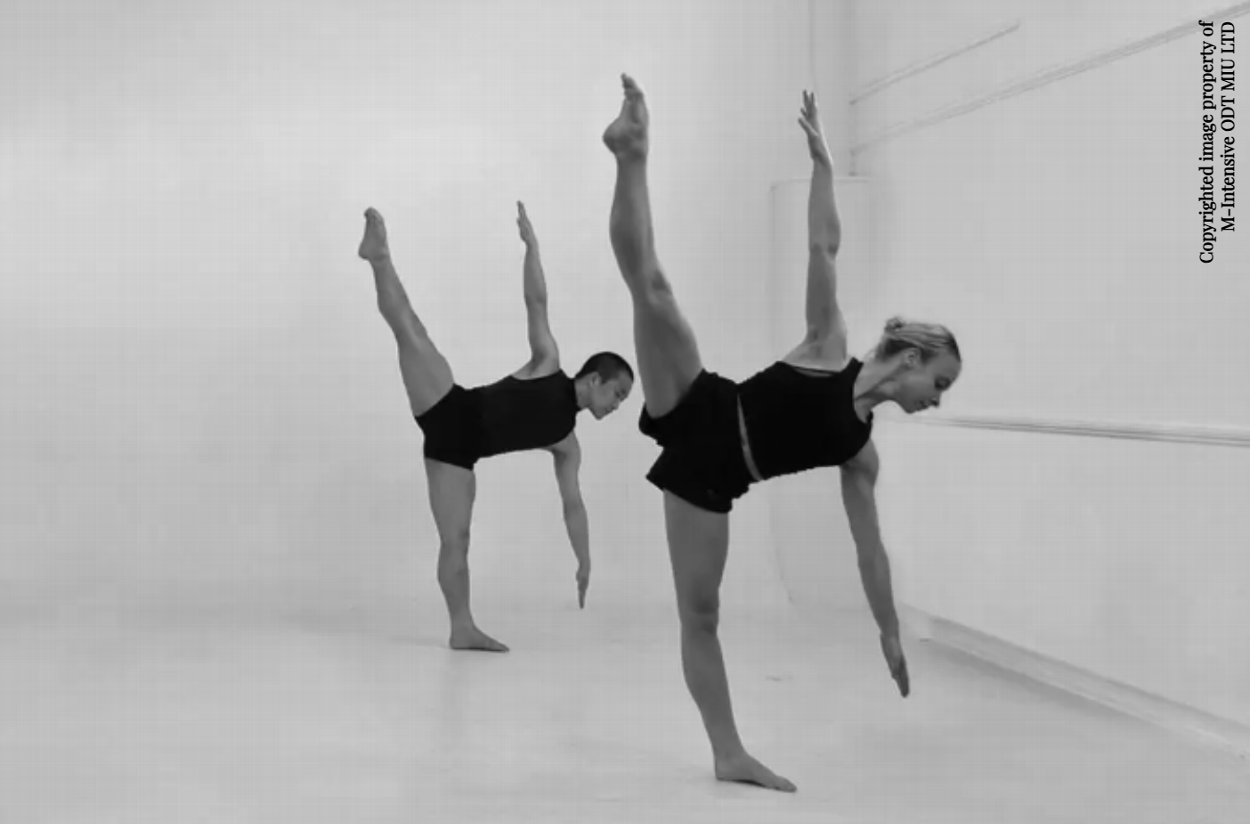
18. Knee Vibration
Purpose: Rond de jambe with grand battement exercise. Deepen the resistance in contraction and acquire percussive movement in the release.
Structure: Rond de jambe on the floor and in the air
Graham repertory: Errand into the Maze (1947)
The more I write this article, the more I realize how legendary Martha Graham is. I say this in the present because her dance makes her more alive than ever!
This unusual movement is spectacular. Indeed, we vibrate! It is as if your leg is getting in and out of your body; it stretches you and strengthens your hip flexors and glutes. Your abdomen is fully involved, and you acquire more core stability, which enormously enhances balance.
Martha Graham once explained that movement could be used to express a wide range of emotions, including joy, anger, and love. To end the performance, we'll perform an explosive grand battement, similar to the popping of a champagne bottle. This final move will provide complete satisfaction and a sense of liberation.
This dance exercise captures the essence of Graham, and its intense expression still surprises me today.
Recommendations: Begin by demonstrating the Figure 8 motion on the floor with alternating contractions and releases for a period of time.
For better balance in the movement, instruct your students to place their hands on their waist and focus solely on the rond de jambe and the contraction. This is similar to breathing exercises, where you exhale during the contraction and inhale during the release. The same fundamental rules apply here.
Once in the air, the leg is close to the torso, even the shoulder. Think about bending the standing leg. Being very grounded before the grand battement helps. It pushes you but keeps you on the floor like a tree. It is an explosion with the illusion of complete abandonment because, in reality, it requires excellent control.
19. Step Draws
Purpose: Travelling exercise that improves space awareness, balance, and peripheral vision
Structure: Flat across the floor, in a circle or turns, slow or fast-paced
Graham repertory: Clytemnestra (1958)
"Step Draws, Step Draws." I can still hear the voice of one of my favourite Graham technique teachers, Mr Kevin Predmore! He made me fall in love with it.
This movement can be performed in various ways, such as a flat formation across the floor, in a circular arrangement, with the option of turning, and at a slow or relatively fast pace. Multiple combinations are possible.
Laureen Elizabeth, an expert on the Graham technique at M-Intensive University, shared an amazing image with us during one of her teaching sessions. The image was from Clytemnestra (1958), which featured the unique step. This movement beautifully captures the inner conflict experienced by the vengeful queen of Mycenae. In fact, it creates an impression of opposition between our body and our heart; The body will go in one direction while the head looks in the opposite direction. We are in a delicate balance between two intentions. Thanks to Laureen for this vivid image; what an excellent Graham technique teacher!
The feet' unusual movement combined with spirals shows the influence of Balinese and Javanese classical dance.
Recommendations: As you will learn in our MIU tutorial, it is essential to keep your gaze fixed on the spiral and maintain the correct posture. The process involves creating the illusion of travelling on the water while focusing on the torso and resisting gravity to demonstrate control in weight shift and balance while simultaneously showcasing opposition.
Keep your feet as close to the floor as possible in the demi-pointe.
In our tutorial, you will see how the talented dancer absorbs the movement and repeatedly applies corrections to find the correct alignment.
At M-Intensive University, exercises are taught in real-time rather than rehearsed for months beforehand, allowing for a natural learning process you can rely on.
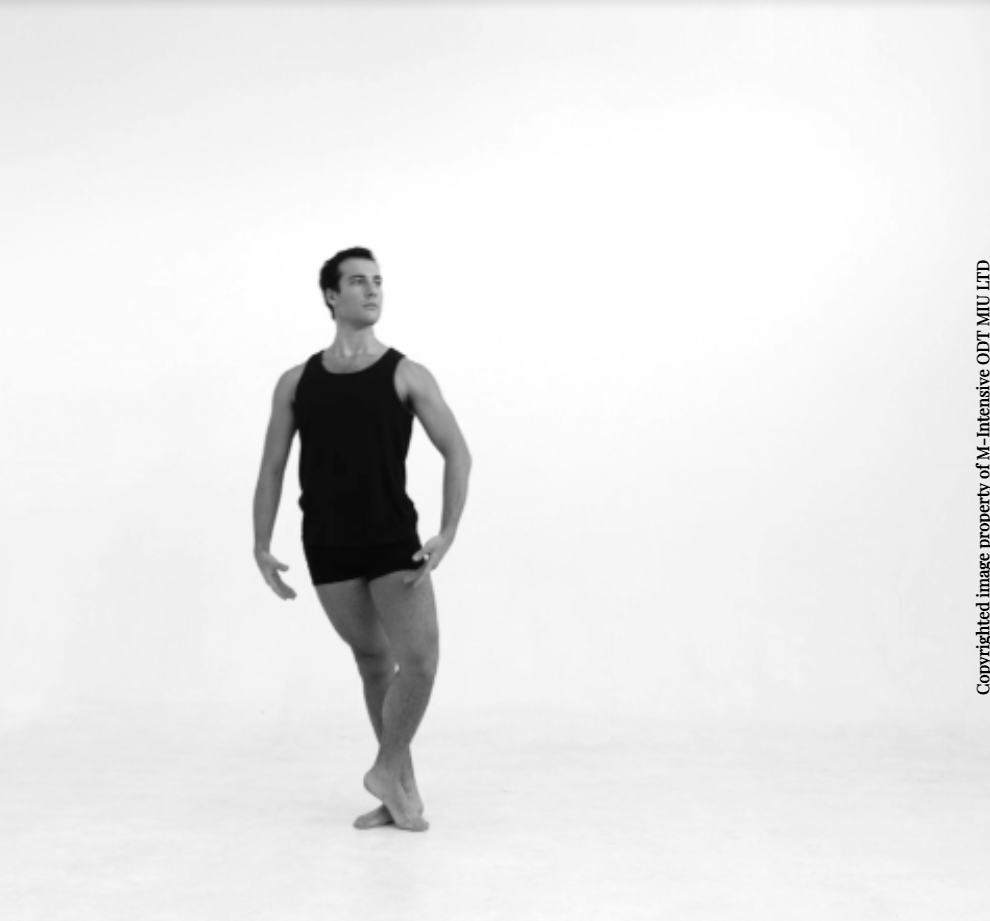
20. Sparkle Jumps
Purpose: Small jumps that travel and warm up calves. Improve dynamics and musicality. Prepare the body for bigger jumps
Structure: Across the floor and fast-paced
Graham repertory: Acrobats of God (1960)
If you want your students to love the Graham technique, Sparkles is one of the most beloved jumps! It brings joy and happiness to the studio!
Technically, these are Temps Levé jumps. They are pretty fast-paced and it feels like the floor is on fire, so you have to jump quickly to avoid getting burned! An extension of the Piqué Step Step, which could also be included in this list, is perfect for warming up the calves and preparing the body for big jumps across the floor.
Add spirals when jumping to link movements in combinations and release joy!
My students are always disappointed when we don't do sparkle jumps in class. It's a treat that we save for special occasions!
Recommendations: Start the movement with Piqué Step Step and gradually add spirals, port de bras and jumps.
I enjoy playing with the pace of the class and find it to be an excellent way to conclude with some voice work. Even after a combination, we finish off on a friendly and positive note with Sparkles jumping around like Bambi! Haha.
Everyone is clapping in rhythm. It is a truly memorable experience!
21. Bison Jumps
Purpose: Big attitude jumps in contraction that improves elevation and propulsion
Structure: In combination, on the spot or across the floor
Graham repertory: Night Journey (1947)
Bison jumps are celebrated in the Graham community and are often taught in class on their own and in choreography.
The movement involves the legs meeting the torso in a deep contraction and can either involve travelling or being performed in one spot. This athletic step can be seen in many of Martha Graham's ballets, including Night Journey (1947). I particularly admire the impressive ensemble of powerful women who perform these big contractions before jumping on the piano. It's a superb display of creativity and intelligence, don't you think? It's a clever way to interact with the music.
Martha Graham's choreographic history was truly established with this iconic moment, making her one of the greatest choreographers in human history. How inspiring!
I absolutely adore it in The Rite of Spring (1984). It's incredibly powerful, and the performance is stunning.
Recommendations: It's important to focus on the contraction. To work on the correct alignment and placement, start by performing the Bison position in the centre slowly on either 4 or 2 counts. Begin with the back leg on the floor first, in a significant 4th position. This will help you acquire the correct alignment and positioning for a successful Bison jump.
Then, introduce the jumps on the spot with an assembly beforehand; this popular exercise works.
The Graham Technique in 21 Movements.
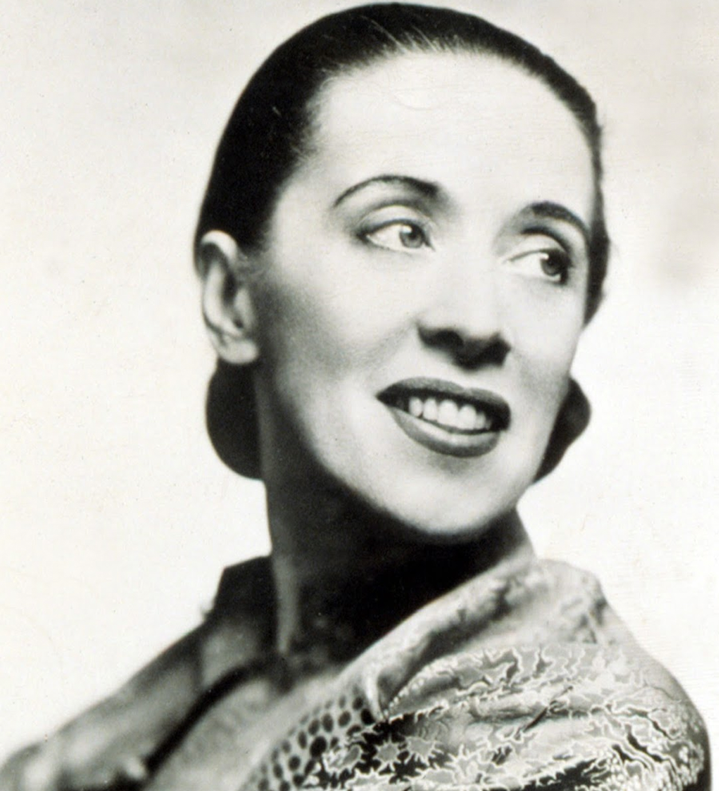 Martha Graham revolutionised contemporary dance. Her modern dance Technique is taught in many institutions, including the prestigious Martha Graham Dance School and Company, which shares her works with millions worldwide.
Martha Graham revolutionised contemporary dance. Her modern dance Technique is taught in many institutions, including the prestigious Martha Graham Dance School and Company, which shares her works with millions worldwide.
Martha Graham was successful in creating her unique style of dance with the help of her loyal dancers, who played a significant role in shaping the Graham Technique class that we know today. They provided us with valuable resources that allowed us to better understand her art and feel a deeper connection to Martha Graham herself. For this, we can't express enough gratitude.
These 21 movements will provide you with a thorough understanding of the fundamentals and stylistics of the Technique.
It's amazing to think there are over 200 movements in the canon of Martha Graham's unique dance style. This achievement is truly unreal! I hope that this blog motivates you to learn more about this incredible dance form.
The impact of Graham on my career is profound. The Technique has broadened my perspective on how my body can move, and I am honoured to pass on this knowledge to others.
I am grateful for writing this post, as these are fundamental exercises for teachers and students to learn the technique.
In MIU, you will study these movements and access all the resources you need to master the Graham Technique and its principles. If you are ready to become a member, click here
Remember, it takes time and patience. M Intensive University will stay by your side for as long as necessary and will guide you along the way.
I dedicate this article to you, Martha Graham; thank you for enlightening me.
Thank you for everything. You are Eternal.
Thank you for reading; please share this with your friends and family!

Win a Full MIU Scholarship
We are sponsoring students for the Certification Programme, which allows you to develop your teaching talents while embodying Patrice Moniz's Transmission Technique and unique approach to dance education. We seek dedication and unwavering devotion to the Graham and Horton legacy in every application.
Our scholarship opportunities reflect the love and dedication to the craft we aspire to instil in every MIU graduate.
Next on A Safe Place To Be:
What Do Dancers Think About Social Media?
The Ultimate Guide to a Complete Makeover
The real-life of a Dancer - And how to deal with it like a Pro
Interview: A Dancer's Life, The Story of Don Prosch
Free yourself from your biggest addiction: Sugar!
The New Dance Teacher's Guideline for Success
How to stay motivated? The Art of Visualisation!
11 reasons why you shouldn't skip ballet
The best dance application in 8 easy steps
Live a happy, healthy, and dancy life in 14 easy steps!
Disclaimer: All content provided on M-Intensive.co.uk is for informational purposes only. The owner of this blog makes no representations of the accuracy or completeness of any information on this site or found by following any link on this site. The owner will not be liable for any errors or omissions in this information nor for the availability of this information. The owner will not be liable for any losses, injuries, or damages from the display or use of this information. These terms and conditions of use are subject to change at any time and without notice.
